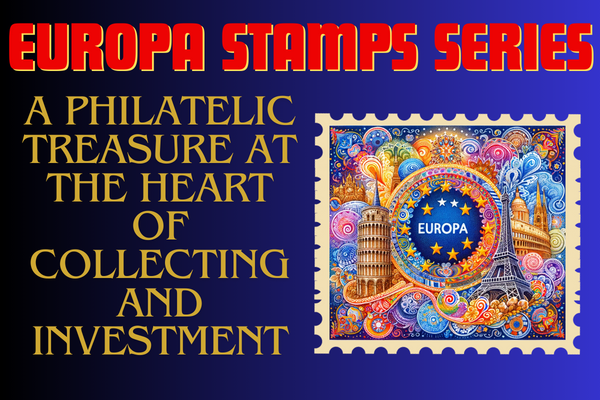
Philately, the study and collection of postage stamps, is more than just a hobby. It offers a unique window into the history, culture, and art of different times and regions. Beyond its educational and aesthetic value, philately has also emerged as a form of alternative investment. Rare and unique stamps can appreciate in value over time, potentially offering lucrative returns to collectors and investors.

The EUROPA Stamp Series
The EUROPA stamp series is a shining example of philately’s blend of art, culture, and investment potential. These stamps are more than just postage; they are cultural artifacts that encapsulate the spirit of European unity and collaboration. Each stamp in the series is a piece of history, reflecting the trends, artistic movements, and political climates of the times in which they were issued. For collectors and investors alike, the EUROPA series offers a fascinating avenue for exploration and appreciation.
Origins and Evolution
The EUROPA series stands as a distinguished example in the philatelic world. Initiated in 1956, this series involves European countries issuing stamps under a common theme, promoting unity and cooperation across Europe. Each year, a new theme is chosen, resulting in a variety of designs and cultural representations.
Collector and Investment Value
EUROPA series stamps are coveted by collectors for their artistic designs and cultural significance. Their limited issuance also makes them objects of great interest to philatelic investors. These stamps often experience an increase in value, especially those from early editions or with unique features.

Key Aspects of Philatelic Investment
Investing in philately involves more than just acquiring rare stamps; it requires an understanding of the market dynamics and trends. Philatelic investment is not just about the immediate value of the stamps, but also about their potential to appreciate over time. This appreciation is influenced by factors such as historical significance, rarity, condition, and market demand. Successful philatelic investors often possess a keen eye for detail and a deep understanding of the history and context of their collections.
Authenticity and Condition
A crucial factor in a stamp’s valuation is its authenticity and condition. Stamps that are well-preserved, without postal marks, and with their original gum intact, tend to be more valuable.
Rarity and Demand
Rarity is another vital element. Stamps issued in limited quantities, or those with unusual printing errors, are especially valuable. Market demand also plays a significant role in determining value.
Diversification and Specialization
For an investor, diversifying their collection can mitigate risks, but specializing in a particular area, like the EUROPA series, can offer in-depth knowledge and expertise that might be advantageous in the long run.
Conclusion: Philately as Both Investment and Passion
Stamp collecting, whether for pleasure or as an investment, offers a rewarding experience. The EUROPA series, in particular, is not only a potentially lucrative investment but also a gateway to understanding European history and culture. I encourage collectors, both general and thematic, to explore the EUROPA series. In doing so, they are not only acquiring pieces of historical and financial value but are also engaging in a hobby that educates, entertains, and enriches.





